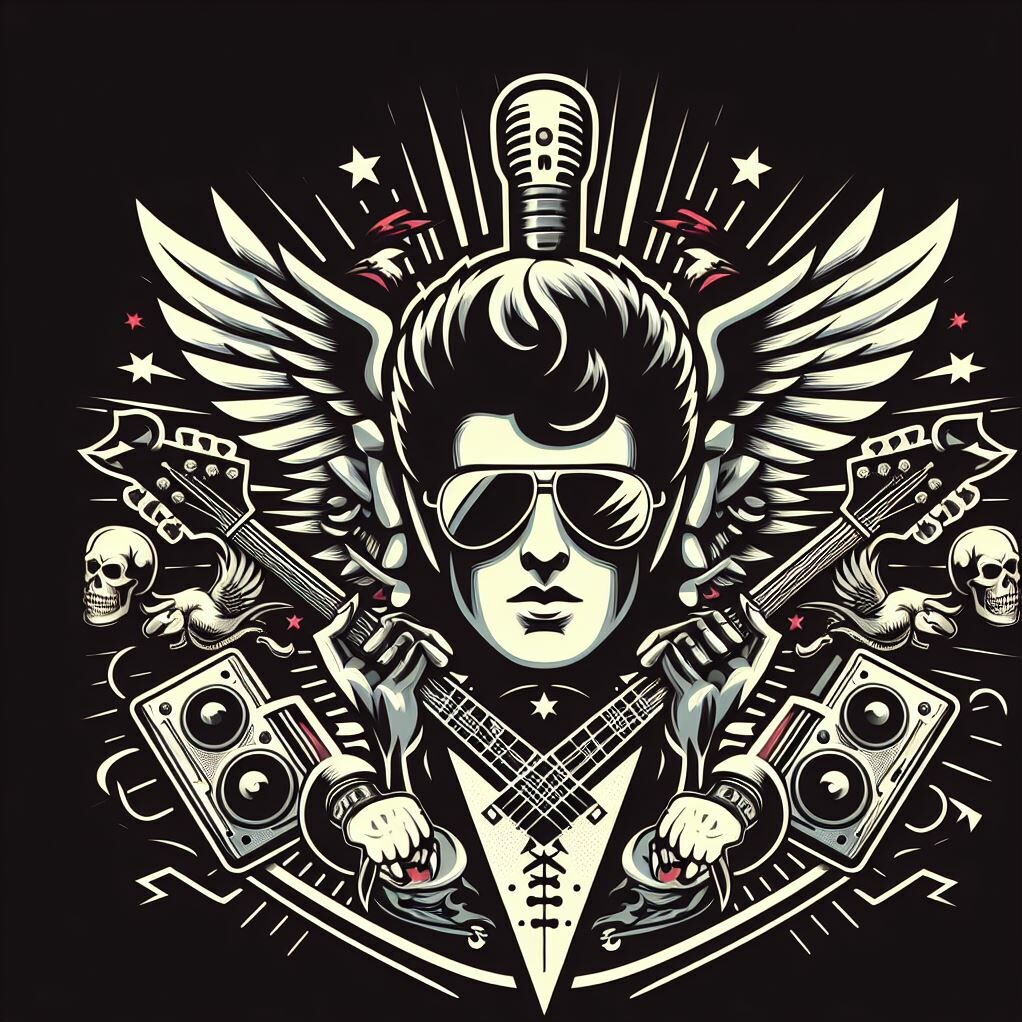I’m going to take you back to where it all started for one of rock’s most electrifying bands. AC/DC’s formation story isn’t just about the birth of a band; it’s also about the spark that ignited a revolution in rock music. Back in 1973, in Sydney, Australia, brothers Malcolm and Angus Young turned up the volume on their guitars and set the stage for a new kind of sound. With Bon Scott’s raspy, powerful vocals, Mark Evans on the bass, and Phil Rudd keeping the beats on drums, AC/DC was ready to shake the music world.
Each original member brought their own thunder to the band’s dynamic. Malcolm’s rhythm guitar work provided a stout backbone to their music, while Angus’s lead guitar riffs and schoolboy-uniform antics became iconic. Bon Scott’s voice was a force unto itself, embodying the gritty spirit of rock. Evans’ bass lines pulsed with synergy, and Rudd’s drumming punctuated the raw energy of their songs.
AC/DC quickly began to resonate with fans, offering an antithesis to the more polished rock sounds of the early ’70s. But what really set them apart was their relentless commitment to hard-hitting, straightforward rock and roll. They proved that there was an appetite for this unapologetic noise, carving out a distinct place in the annals of music history.
In this formative period, the cultural context was pivotal. AC/DC emerged at a time when rock music was a vehicle for both social commentary and escapism. Their raucous sound was a perfect match for the era’s raw energy, challenging norms and offering an escape from the turbulent social landscape. It’s this exact potency and relevance that allowed their sound to take flight, solidifying their position as rock legends.
The Evolution of AC/DC’s Sound and Style
AC/DC has been synonymous with raw energy and relentless power chords since they hit the scene in the ’70s. But like all great bands, their sound and style have morphed over the decades. This isn’t just about a shift in musical technique, it’s also about the evolving spirit of rock ‘n’ roll that they so brilliantly encapsulate.
With every lineup change, AC/DC faced the challenge of staying fresh while remaining true to their roots. The departure of lead singer Bon Scott in 1980 was a pivotal moment. With his gritty vocals and electrifying stage presence, Scott was a hard act to follow. However, Brian Johnson stepped in and the band released ‘Back in Black,’ a tribute to Scott and a decisive step forward that became one of the best-selling albums of all time.
The band’s ability to capture the hearts of both long-time fans and newcomers has been nothing short of remarkable. Newer albums like ‘Black Ice’ and ‘Rock or Bust’ still flaunt the classic AC/DC sound, with guitar riffs that cut right through to your core and an unmistakable rhythm section that won’t quit.
Their discography is a road map of rock. From the early days of ‘High Voltage’ to the seismic ‘For Those About to Rock We Salute You,’ their albums have become milestones, charting the journey of a band that never compromised on raw power. As we gaze upon their body of work, it’s clear AC/DC has not just survived the shifting tides of the music industry—they have steered them.
AC/DC’s Current Lineup: The Legacy Continues
You’re probably curious about who’s holding the fort for AC/DC today. After multiple lineup changes over the decades, the current roster includes a mix of founding members, early joiners, and new faces. Let’s break it down.
Angus Young remains the unshakable lead guitarist, still donning his signature schoolboy outfit. He’s the last of the original Young brothers in the band but continues to be the powerhouse behind those iconic riffs.
Stepping to the microphone is none other than Brian Johnson, rejuvenating the band’s vocals after temporarily stepping away due to hearing issues. His return was welcomed with open arms by fans worldwide.
Rounding out the rhythm section, we have Cliff Williams on bass and Phil Rudd on drums. Both are veterans who’ve been with AC/DC since the ’70s and ’80s, respectively, offering a tightly woven backbone to the band’s thunderous tracks.
On rhythm guitar, Stevie Young has taken over for his uncle, Malcolm Young, honoring his legacy while adding his own flair to the rhythm work.
Together, they’re not just reminiscing about the glory days; they’re actively contributing to AC/DC’s storied saga with fresh material. Their latest album, ‘Power Up,’ hit shelves and streaming platforms, showcasing that the band’s fiery spirit hasn’t dimmed.
While the passing of Malcolm Young in 2017 and the earlier departure of Bon Scott who was a defining element of the band’s sound in its early days, hit hard, AC/DC has powered through. Every member of the current lineup serves as a bridge between the past and the present, honoring the groundwork laid by their predecessors while navigating the new currents of rock music.
AC/DC’s tenacity shows that you can always adjust your approach down the road, but never at the expense of what made you unique. This crew exemplifies that, upholding the band’s signature sound amid changes.
AC/DC’s Impact on Music: Then and Now
on Music: Then and Now
I’m going to lay it out straight: AC/DC isn’t just a band; it’s a phenomenon that’s rocked generations. From their defiant riffs to their indomitable spirit, they’ve carved a niche in rock that’s all their own. But what really makes AC/DC tick in the grand tapestry of music, both yesterday and today?
You’re going to find out about the sheer influence AC/DC has exerted on the rock genre. Fans from every corner of the globe can hum ‘Back in Black’ without missing a beat, a testament to the band’s universal language of raw energy and no-nonsense rock ‘n’ roll. This isn’t just about powerful music; it’s also about a powerful legacy.
A lot is happening very quickly in the music world, but AC/DC’s relevance has remained as sturdy as a wall of Marshall amps. We’ve seen a slew of bands come and go, yet AC/DC’s sound still electrifies stadiums. There’s a lot of opportunity in this for emerging rock bands: to be influenced by AC/DC’s style while innovating for their own generation.
Their ability to adapt over the years without losing their core essence is a mark of true artistry. AC/DC has survived the test of time, much like their anthems that reverberate through the ages. It blew me away, the quality of their live performances, which today remain as visceral and engaging as ever.
So my question to you today is, what’s your AC/DC moment? Maybe it was a live show that left your ears ringing with a sense of euphoria, a riff that gave you an earworm for days, or an album that became the soundtrack to a chapter of your life. Choose something that resonates with you, and you’ll understand why AC/DC’s impression on music is so profound.
In conclusion, AC/DC’s then and now story isn’t just about a band’s survival; it’s a celebration of sticking to your roots while rocking the status quo. That’s the strategy their music teaches us to leverage – enduring and evolving without ever flipping the off switch on the high voltage rock that fuels their fire, and ours. Thanks for following along, and remember – always keep on rockin’ in a free world!
